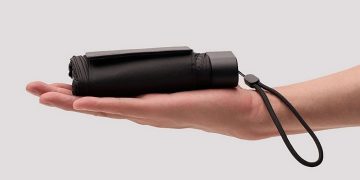
Many modern cameras have powerful in-body stabilization that make extended handheld shooting a viable option for many occasions. Despite that, there are still plenty of situations where shooting on a tripod is going to be your best recourse, such as when you’re shooting in low-light, doing long exposures, or recording timelapse videos. Simply put, it’s the best tool to keep your camera steady in situations when the slightest movements can result in a blurry picture.
The best camera tripods, basically, bring a lot of versatility to your photography gear bag. With its feet firmly planted on the ground, it gives you a way to stabilize your camera like no other accessories can. It also helps offload a lot of weight from your arms, which can prove extremely helpful when you’re shooting with heavier telephoto or wide-angle lenses.
Some of the best camera tripods have adjustable legs that allow you to be creative with heights and angles, making it possible to explore different perspectives for your photos and videos. Because it keeps the camera in the same place the whole time, it’s easier to set up your shot and refine it multiple times over, while allowing for consistent framing across multiple shots in the same scene.
What should you look for in the best camera tripods? The primary considerations should be the load capacity (how much weight can it carry), the maximum height, angling options for the legs, head positioning, and portability. The latter matters less if you only plan to use it for studio work, but obviously carries a lot of weight if you plan to take it with your travel camera to various locations. Durability is an important one, too, especially if you plan to use it frequently, while the appeal of any other elements will depend on your individual use-cases.
These are the best camera tripods for bring greater stability to your photo and video shoots.
Vanguard Alta Pro 2+
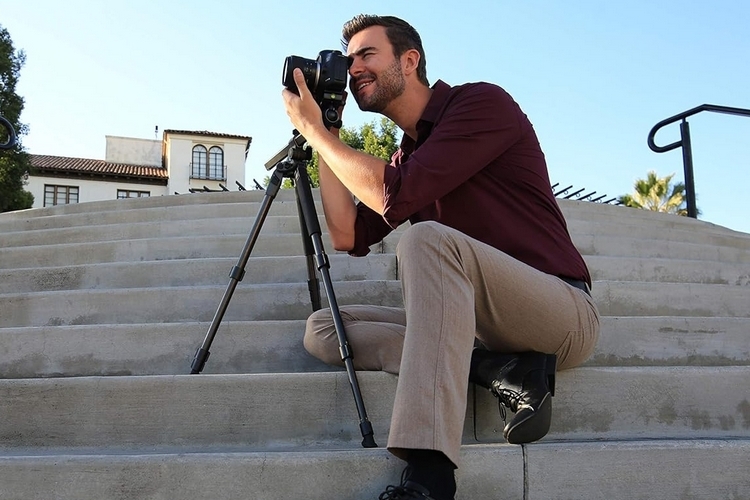
Pros
- Multi-angle center column
- Leg locks in four angles
- Good balance of affordability and function
Cons
- Suspension loop less versatile than hooks found on other tripods
- Large folded size
Material: Aluminum
Max height: 68.2 inches
Max weight: 15 pounds
Collapsed length: 29 inches
We love Vanguard’s tripod offerings, largely because they strike a good balance of affordability and function. This one, for instance, is the most affordably-priced in the list, all while offering excellent maximum height and stability. Its legs can spread outwards at up to four angles for shooting closer to the earth, while the center column can be rotated freely relative to the legs, allowing you to point it at almost any direction. We found it to be very stable at most the available heights, only showing any wobble with the long center column fully extended similar to other tripods, while offering a good deal of adaptability in uneven ground with the four locking angles. There are plenty of little details to like here, from the built-in bubble level to ensure it stays aligned after adjusting and the handy twist-lock system to the suspension loop for counterbalance weight and the rubberized grips for carrying it when collapsed. It doesn’t feel as durable as more expensive tripods, but it feels solid enough that it’s likely to hold up for several years of regular use.
Manfrotto 055 3-Section Carbon Fiber Tripod
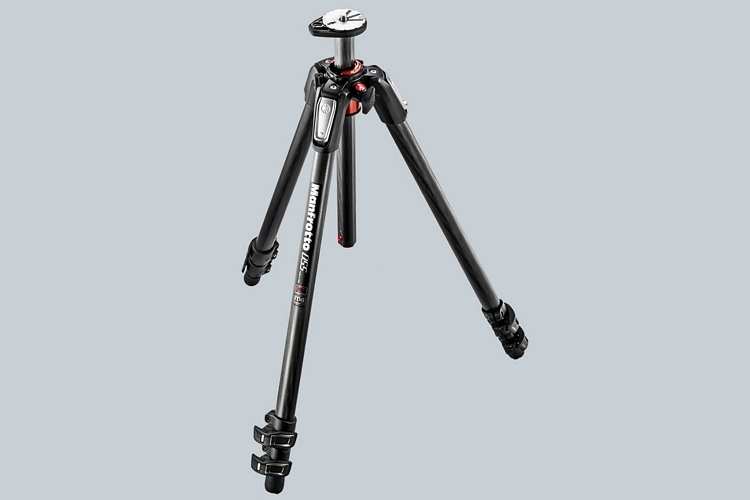
Pros
- Center column can serve as horizontal boom
- Superb build quality
- Excellent stability
Cons
- Limited center column angles
- Large collapsed size
Material: Carbon fiber
Max height: 66.9 inches
Max weight: 19.8 pounds
Collapsed length: 28.3 inches
While there’s an aluminum version of this camera tripod, we very much prefer this carbon fiber variant, as it’s over a pound lighter while being much more resistant to vibrations. it has four lockable leg angles similar to the Vanguard above, so you get a good range of shooting height options, although the center column can only be locked in either vertical or horizontal positions, so you don’t get the variety in shooting angles. We love the build quality on this tripod, giving it a remarkably heavy-duty feel, as well as the mechanisms for releasing the leg sections and adjusting the leg angles. It provides incredibly solid and stable support, absorbing vibrations very capably, while being very quick and easy to set up, ensuring smooth operation the whole time you use it.
3-Legged Thing Leo 2.0
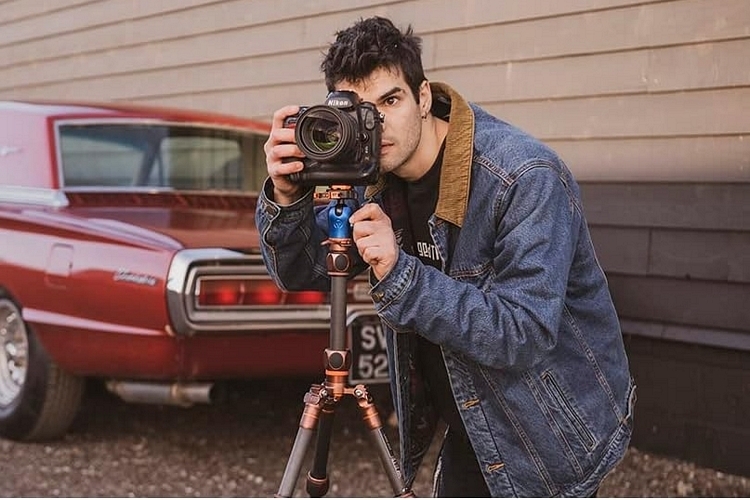
Pros
- Extremely rigid and stable
- Supports heavy weights
- Three removable legs
Cons
- No movement for center column
- Shorter max height
Material: Carbon fiber
Max height: 54.3 inches
Max weight: 66 pounds
Collapsed length: 14.7 inches
A compact camera tripod designed for travel, this model collapses to just 14.7 inches long, making it easy to take along when traveling for a shoot. It’s still on the heavy end for a travel tripod, but that’s largely because of the chunky build, which goes a long way towards helping its stability even under heavy loads. How heavy? Well, the darn thing is rated to handle up to 66 pounds when set at the lowest height (22 pounds at max height), which is ridiculous for a tripod this compact. Once set up, it’s extremely stable and rigid, holding your camera perfectly still to ensure you get clean shots each time out. The legs lock in any of three angles, too, so you get nice placement options, although the center column stays pretty fixed in place, only allowing you to invert it for putting the camera at the bottom. We love the fact that you can remove any of the legs for use as a monopod or boom up to 59 inches long when attached to the center column. Construction is carbon fiber for the tubes and magnesium alloy for the rest of the hardware, giving it a heavy-duty build that feels like it can last you for decades.
Peak Design Carbon Fiber Travel Tripod
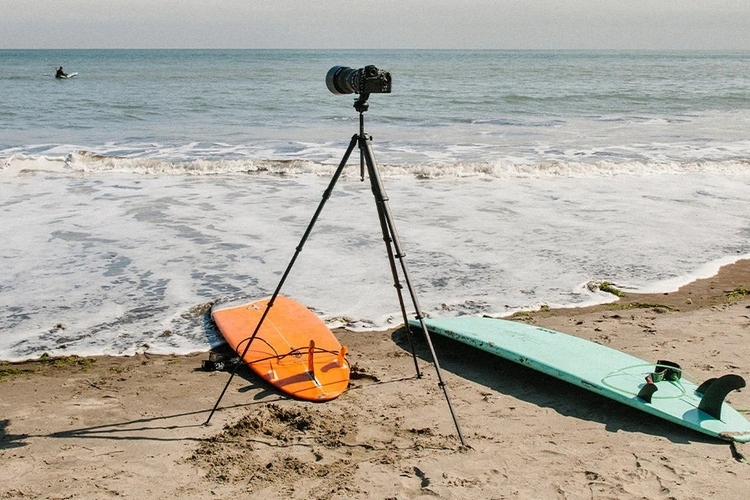
Pros
- Slim profile when collapsed
- Lightweight
- Innovative design
Cons
- Only two leg angles
Material: Carbon fiber
Max height: 60 inches
Max weight: 20.1 pounds
Collapsed length: 15.5 inches
While it’s not the shortest travel tripod we’ve used, we can’t help but marvel at how slim the whole thing feels when collapsed. Heck, it doesn’t even feel like a real tripod when folded up. Deploy it, though, and you get yourself a pretty impressive piece of photography gear, starting with the five-section legs all releasing at the same time. That compact 15.5-inch long frame (which includes the ball head, by the way), on the other hand, expands to give you a maximum height of 60 inches, while also allowing you to position the camera just a few inches off the ground for low-angle shots. Sadly, it doesn’t lock the legs at any other angle in between, so you’re stuck between those two extremes. It also doesn’t offer any pan or tilt controls for the center column, so you do put up with some definite limitations for the compact profile.
Gitzo GT5543LS Series 5
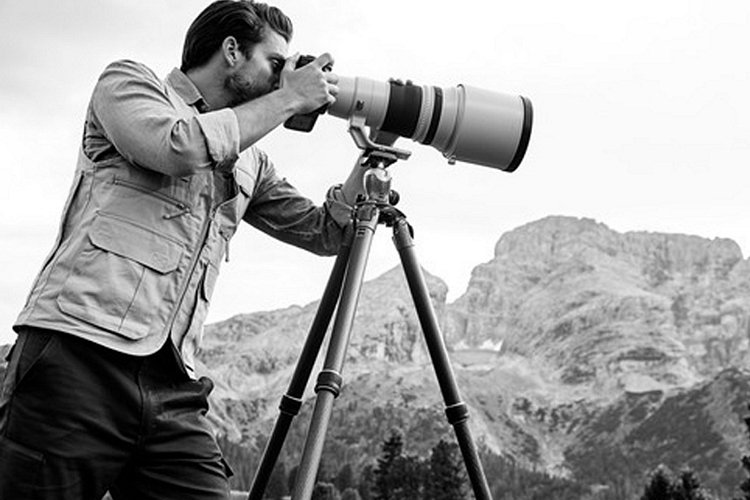
Pros
- Extremely stable even in windy conditions
- High-strength, high-rigidity
- Handles extreme weights
Cons
- Expensive
- Heavy
Material: Carbon fiber
Max height: 55 inches
Max weight: 88.2 pounds
Collapsed length: 27.5 inches
This camera tripod is very pricey, but it brings the functionality to make it worth every penny. It’s not surprising, given Gitmo’s reputation in building out the best tripods since the 1950s. This is the model we recommend for those who want extreme stability, as it holds its place even in the face of strong winds while set up on uneven terrain. Seriously, this thing doesn’t buckle one bit. It’s plenty durable, too, so much so that Gitzo calls it the most rigid tripod in their entire range, ensuring it’s the kind of gear you can pass on decades down the line. It’s designed to support the heaviest camera and lens combos with a maximum supported payload of over 88 pounds, with burly twist locks making on-the-fly adjustments pretty easy. The removable rubber feet cover more surface area than your standard tripod, while having full contact with the ground at all times, ensuring it maintains footing even in more slippery conditions. It’s modular, too, with a top casting element that can be removed completely for accommodating the outfit’s wide range of accessories, allowing you to extend its function well beyond what most standard tripods can offer.






